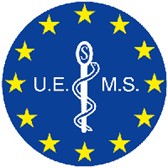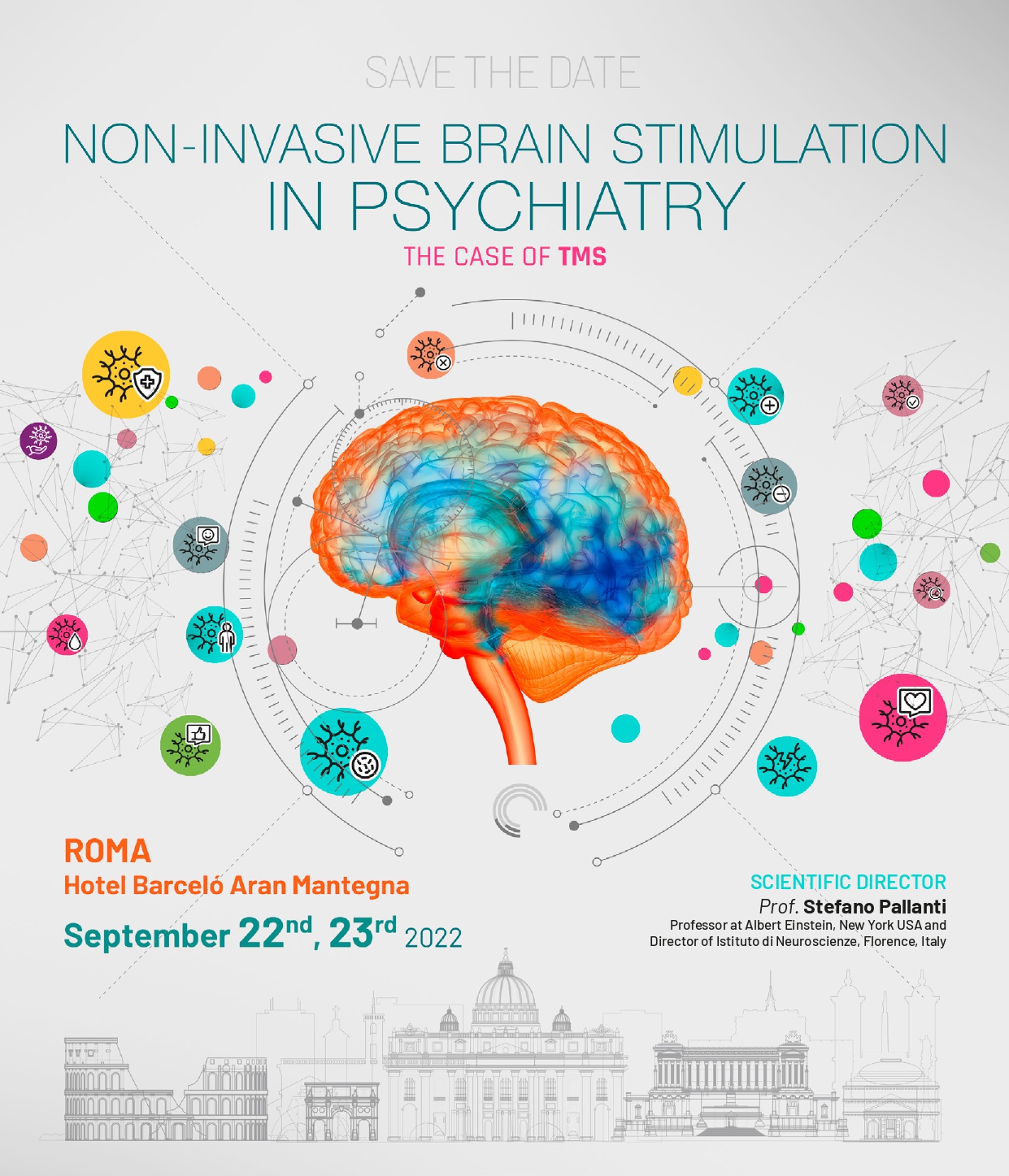Opzioni
22 Settembre 2022
Typology: LEE (Live Educational Event – Course)
Event Dates: September 22nd, 23rd 2022
City: Rome, Italy
Venue: Hotel Barceló Aran Mantegna, Via Andrea Mantegna 130, 00147
Target audience: Psychiatric specialists
Official language: English
Credits: 7 European CME credits (ECMEC®)

“The NON-INVASIVE BRAIN STIMULATION IN PSYCHIATRY: THE CASE OF TMS, Roma, Italy, 22/09/2022-23/09/2022 has been accredited by the European Accreditation Council for Continuing Medical Education (EACCME®) with 7 European CME credits (ECMEC®s). Each medical specialist should claim only those hours of credit that he/she actually spent in the educational activity.”
“Through an agreement between the Union Européenne des Médecins Spécialistes and the American Medical Association, physicians may convert EACCME® credits to an equivalent number of AMA PRA Category 1 CreditsTM. Information on the process to convert EACCME® credit to AMA credit can be found at www.ama-assn.org/education/earn-credit-participation-international-activities.
“Live educational activities, occurring outside of Canada, recognised by the UEMS-EACCME® for ECMEC®s are deemed to be Accredited Group Learning Activities (Section 1) as defined by the Maintenance of Certification Program of the Royal College of Physicians and Surgeons of Canada.”
Please find below the breakdown of ECMEC®s per day:
22.09.2022 – 4.00
23.09.2022 – 3.00
Event agenda: read
Scientific Director: Prof. Stefano Pallanti
Prof. Stefano Pallanti’s COI: read
Faculty’s COI: read
SCIENTIFIC RATIONALE
Non-invasive brain stimulation (NIBS) techniques represent widely used physical therapies in neurology and psychiatry. Among the most widely adopted are those based on the use of magnetic fields (TMS, Transcranial Magnetic Stimulation) or electromagnetic fields (tDCS, transcranial Direct Current Stimulation) applied to the scalp. In both cases, brain activity is modulated in discrete areas below the site of delivery through activation or inhibition of the excitability threshold or neuronal discharge.
Both TMS and tDCS have few contraindications, few side effects and validated efficacy across a wide range of disorders (depression, OCD, chronic pain, Parkinson’s disease, motor stroke, addiction, etc.): for these disorders the efficacy level is very high (level A) and where this is not reached there are still measures of approvals from regulatory bodies (FDA, NICE, etc.). For depression and OCD, TMS therapy is approved for drug-resistant disorders, but this does not mean that TMS is an alternative to pharmacological treatment; if anything, in many cases it represents an excellent support to improve the outcomes in combination with pharmacological therapy. Regarding schizophrenia, the most recent international guidelines identify NIBS with different levels of efficacy on the negative symptoms and auditory hallucinations present in this disorder: in particular, the level of recommendation is C for TMS (probable efficacy) and B for tDCS (possible efficacy).
As such, guidelines take a long time to be published, and therefore refer to studies conducted in the years prior to their publication or revision. However, the most recent publications confirm the efficacy of these techniques while also supporting the favourable association with concomitant pharmacological treatments. Both technologies involve a series of therapeutic sessions, the number and frequency of which depend on the protocols applied, but while TMS treatments are outpatient, for tDCS, remotely controlled systems allowing home treatment are available.
EXPECTED LEARNING OUTCOMES
After attending the event participants will be able to:
– analyse and evaluate the latest evidence, guidelines and protocols on NIBS techiniques, particularly TMS for the treatment of conditions like schizophrenia, depression, OCD, chronic pain, Parkison’s disease, motor stroke, addiction;
– manage advanced skills on the use of NIBS techniques, particularly the TMS terapy, in the treatment of a wide range of disorders (schizophrenia, depression, OCD, chronic pain, Parkison’s disease, motor stroke, addiction);
– develop and apply an interdisciplinary clinical approach to the treatment of conditions like schizophrenia, depression, OCD, chronic pain, Parkinson’s desease, motor stroke, addiction, using non-invasive brain stimulation techniques, particularly TMS terapy, with concomitant pharmacological treatments.
PROVIDER ECM
ID 5452
LETSCOME3 S.r.l.
Via Grazia Deledda 75/81 – 00137 Roma
Telefono +39 06 91502790
www.letscome3.it

REGISTRATIONS ARE CLOSED - PLACES SOLD OUT
With an unrestricted educational grant from:
RECORDATI SPA
ATID SRL
GEA SOLUZIONI SRL
